Golf
The Rise and Evolution of Golf in Asia
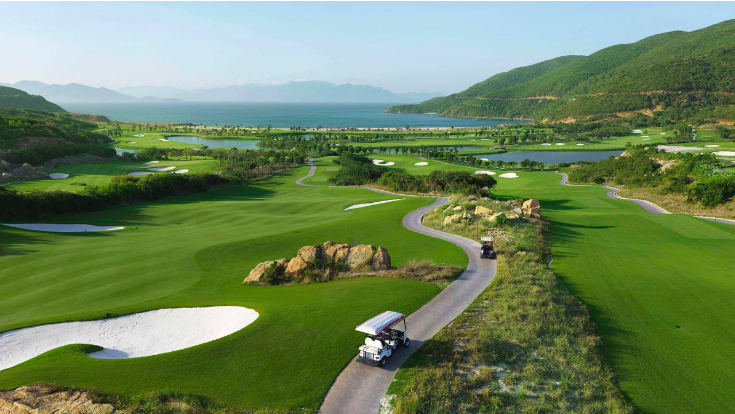
The Rise and Evolution of Golf in Asia
Golf in Asia has experienced tremendous growth over the past few decades. With the emergence of world-class players, state-of-the-art golf courses, and increasing popularity among the general public, the sport has firmly established itself on the continent. This article delves into the development, challenges, and future prospects of golf in Asia, highlighting key figures, tournaments, and innovations that have shaped its current status.
The Historical Roots of Golf in Asia
Early Beginnings
The introduction of golf in Asia dates back to the colonial era when British expatriates brought the sport to countries like India and China. The first golf clubs in Asia were established in the late 19th and early 20th centuries, serving mainly the expatriate community.
Pioneering Golf Clubs
Some of the earliest golf clubs in Asia include:
- Royal Calcutta Golf Club (India) – Established in 1829, it is the oldest golf club outside the British Isles.
- Royal Hong Kong Golf Club (China) – Founded in 1889, it played a significant role in promoting golf in the region.
- Singapore Island Country Club (Singapore) – Established in 1891, it remains one of the premier golf clubs in Southeast Asia.
Key Figures in Asian Golf
Isao Aoki
Isao Aoki, a trailblazing golfer from Japan, is considered one of Asia’s greatest golfers. He became the first Japanese player to win a PGA Tour event, achieving this milestone at the 1983 Hawaiian Open. His success paved the way for future generations of Asian golfers.
Se Ri Pak
Se Ri Pak’s impact on women’s golf cannot be overstated. Her victory at the 1998 U.S. Women’s Open inspired a wave of South Korean golfers, leading to the dominance of Korean players on the LPGA Tour. Pak’s success has had a lasting influence on the growth of women’s golf in Asia.
Hideki Matsuyama
Hideki Matsuyama’s win at the 2021 Masters Tournament marked a historic moment for Asian golf. As the first Japanese player to win a men’s major championship, Matsuyama’s victory has further increased the popularity of golf in Japan and across Asia.
Growth of Golf Tournaments in Asia
Asian Tour
The Asian Tour, established in 1994, has been instrumental in promoting professional golf in Asia. It provides a platform for talented golfers to compete at the highest level and has significantly contributed to the growth of the sport on the continent.
HSBC Champions
The HSBC Champions tournament, held annually in Shanghai, China, is one of the most prestigious events on the Asian golf calendar. It attracts top players from around the world and has played a crucial role in putting Asian golf on the global stage.
CIMB Classic
The CIMB Classic, held in Malaysia, was the first official PGA Tour event in Southeast Asia. Since its inception in 2010, it has showcased the region’s potential as a major destination for professional golf.
Golf Course Development in Asia

Innovative Course Designs
Asia boasts some of the most innovative and challenging golf courses in the world. Renowned golf course designers like Jack Nicklaus, Greg Norman, and Robert Trent Jones Jr. have contributed to the development of stunning courses across the continent.
Sustainability Initiatives
Many golf courses in Asia are leading the way in sustainable development. Initiatives such as water conservation, eco-friendly landscaping, and renewable energy usage are being implemented to ensure that golf courses minimize their environmental impact.
Top Golf Courses in Asia
- Sentosa Golf Club (Singapore) – Known for its breathtaking views and challenging layout, Sentosa Golf Club is a top destination for golfers in Asia.
- Mission Hills Golf Club (China) – The world’s largest golf club, Mission Hills boasts 12 courses designed by some of the biggest names in golf.
- Blue Canyon Country Club (Thailand) – This iconic club offers two championship courses and has hosted numerous international tournaments.
The Role of Technology in Asian Golf
Golf Simulators and Indoor Facilities
With the rise of urbanization, space for traditional golf courses is limited in many Asian cities. Golf simulators and indoor golf facilities have become increasingly popular, allowing enthusiasts to enjoy the game in a compact setting.
Digital Innovations
The integration of digital technologies, such as GPS-enabled golf carts, mobile apps for course management, and advanced swing analysis tools, has enhanced the golfing experience for players across Asia.
E-Learning and Online Coaching
Online platforms offering golf lessons and coaching have made it easier for aspiring golfers to improve their skills. Virtual coaching sessions, instructional videos, and interactive apps are helping players refine their techniques from the comfort of their homes.
Women’s Golf in Asia
The Rise of Asian Women Golfers
The success of players like Se Ri Pak, Yani Tseng, and Inbee Park has inspired a generation of female golfers in Asia. These athletes have dominated the LPGA Tour, bringing attention to the talent and potential of Asian women in golf.
Key Women’s Tournaments in Asia
- HSBC Women’s World Championship (Singapore) – Known as “Asia’s Major,” this prestigious event attracts the best female golfers from around the world.
- Blue Bay LPGA (China) – This tournament is a significant stop on the LPGA Tour, showcasing the rising prominence of women’s golf in Asia.
- TOTO Japan Classic (Japan) – One of the longest-running events on the LPGA Tour, it highlights the deep-rooted golfing culture in Japan.
Programs and Initiatives
Various programs and initiatives aimed at promoting women’s golf in Asia have been launched. These include grassroots development programs, scholarships for young female golfers, and mentorship opportunities with professional players.
Challenges Facing Golf in Asia
Accessibility and Affordability
One of the primary challenges for golf in Asia is making the sport accessible and affordable for a broader audience. Efforts are being made to reduce costs, provide public golfing facilities, and promote the sport in schools and communities.
Cultural Barriers
In some Asian countries, cultural perceptions of golf as an elite sport pose a barrier to its widespread adoption. Changing these perceptions through targeted outreach and inclusive programs is essential for the growth of the sport.
Environmental Concerns
The development and maintenance of golf courses can have significant environmental impacts. Addressing concerns related to water usage, habitat disruption, and chemical use is crucial for sustainable golf course management.
Future Prospects for Golf in Asia
Emerging Markets
Countries like China, India, and Vietnam are emerging as significant markets for golf. With growing middle-class populations and increasing interest in the sport, these countries offer vast potential for the expansion of golf.
Youth Development
Investing in youth development programs is key to the future of golf in Asia. By providing training, resources, and opportunities for young golfers, the continent can nurture the next generation of golf champions.
Technological Integration
The continued integration of technology in golf will play a pivotal role in its growth. Innovations in equipment, training methods, and course management will enhance the overall experience for golfers in Asia.
Sustainability Initiatives
As sustainability becomes a more pressing concern, the adoption of eco-friendly practices in golf course design and management will be essential. Emphasizing sustainability will ensure that golf can thrive in harmony with the environment.
Conclusion
Golf in Asia has come a long way from its colonial beginnings to becoming a significant force in the global golfing landscape. The contributions of legendary players, the development of world-class courses, and the rise of professional tournaments have all played a part in this transformation.
While challenges remain, the future of golf in Asia looks promising, with new markets emerging, technological advancements enhancing the game, and a growing emphasis on sustainability. The sport’s continued growth will undoubtedly inspire future generations and solidify Asia’s position as a powerhouse in the world of golf.
Frequently Asked Questions (FAQs)
What are some of the top golf courses in Asia?
Some of the top golf courses in Asia include Sentosa Golf Club in Singapore, Mission Hills Golf Club in China, and Blue Canyon Country Club in Thailand. These courses are known for their stunning designs, challenging layouts, and world-class facilities.
Who are some notable Asian golfers?
Notable Asian golfers include Isao Aoki from Japan, Se Ri Pak from South Korea, and Hideki Matsuyama from Japan. These players have achieved significant success on the international stage and have been instrumental in promoting golf in Asia.
What is the significance of the Asian Tour?
The Asian Tour, established in 1994, plays a crucial role in promoting professional golf in Asia. It provides a platform for talented golfers to compete at a high level and has contributed significantly to the sport’s growth and popularity on the continent.
How is technology influencing golf in Asia?
Technology is influencing golf in Asia through innovations like golf simulators, GPS-enabled golf carts, mobile apps for course management, and advanced swing analysis tools. These technologies enhance the golfing experience and make the sport more accessible.
What challenges does golf face in Asia?
Golf in Asia faces challenges such as accessibility and affordability, cultural barriers, and environmental concerns. Efforts to address these issues include promoting the sport in schools, reducing costs, and implementing sustainable practices in golf course management.
Golf
Mario Lemieux: The Legendary “Super Mario” of Hockey
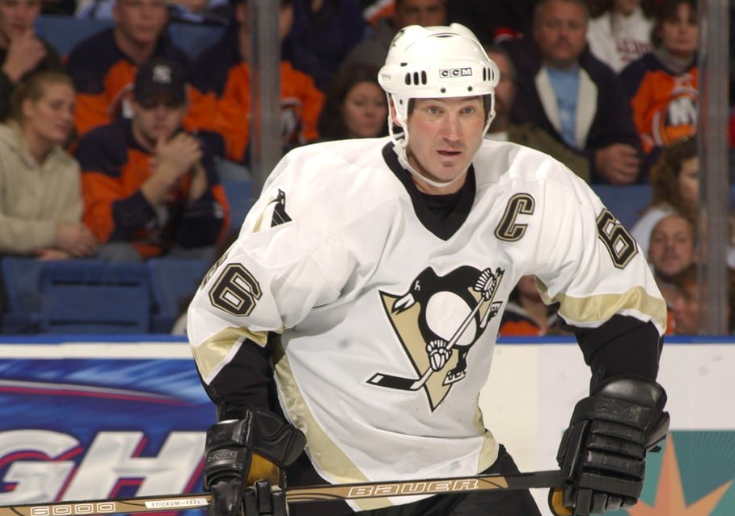
Mario Lemieux: The Legendary “Super Mario” of Hockey
Mario Lemieux’s career in the NHL is a testament to both brilliance and resilience. His ability to dominate the game despite significant health challenges, including Hodgkin’s lymphoma, is nothing short of legendary. Over his illustrious career, Lemieux scored an impressive 690 goals and added 1,033 assists, making him one of the most prolific players in hockey history. Let’s delve deeper into the life and career of this remarkable athlete, exploring his early years, his rise to stardom, and the challenges he overcame to become a true superstar.
Early Life and Introduction to Hockey
Humble Beginnings in Montreal
Mario Lemieux was born on October 5, 1965, in Montreal, Quebec. Growing up in a working-class family, Lemieux’s passion for hockey was evident from a young age. His parents, Jean-Guy and Pierrette, encouraged him and his brothers to play hockey, and they would often practice in the family’s basement.
Junior Hockey Success
Lemieux’s talent was apparent early on, and he quickly made a name for himself in junior hockey. Playing for the Laval Voisins of the Quebec Major Junior Hockey League (QMJHL), Lemieux shattered records, including scoring an astonishing 282 points in the 1983-84 season. His performances drew the attention of NHL scouts and set the stage for his professional career.
NHL Debut and Rise to Stardom
Joining the Pittsburgh Penguins
In 1984, the Pittsburgh Penguins selected Mario Lemieux as the first overall pick in the NHL Draft. He made an immediate impact, scoring on his very first shift in his debut game. His rookie season ended with him winning the Calder Memorial Trophy, awarded to the league’s best rookie.
Dominating the League
Lemieux’s presence on the ice was transformative for the Penguins. His combination of size, speed, and skill made him a nightmare for opposing defenses. By the 1988-89 season, he had established himself as one of the league’s top players, scoring 85 goals and tallying 199 points, the second-highest total in NHL history.
Battling Health Issues
Hodgkin’s Lymphoma Diagnosis
In January 1993, Lemieux was diagnosed with Hodgkin’s lymphoma, a type of cancer that affects the lymphatic system. This diagnosis was a significant blow, not just to Lemieux but to the entire hockey community. However, his response to the diagnosis exemplified his resilience and determination.
Remarkable Return
After undergoing radiation treatments, Lemieux made a remarkable return to the ice just two months later. In his first game back, he scored a goal and had an assist, and he went on to win the NHL scoring title that season. This comeback remains one of the most inspiring stories in sports history.
Championship Success and Retirement
Stanley Cup Victories
Lemieux’s contributions were pivotal in leading the Penguins to back-to-back Stanley Cup championships in 1991 and 1992. His performances in the playoffs were extraordinary, earning him the Conn Smythe Trophy as the most valuable player of the playoffs both years.
First Retirement
Persistent back issues and fatigue from his battle with cancer led Lemieux to retire for the first time in 1997. His departure left a void in the NHL, but his impact on the game was undeniable.
Ownership and Second Comeback
Becoming an Owner
In 1999, Lemieux became the first player-owner in NHL history when he led a group to buy the financially struggling Penguins. His involvement off the ice was as impactful as his presence on it, helping to stabilize the franchise’s finances and ensuring its future in Pittsburgh.
Return to the Ice
Lemieux stunned the hockey world by coming out of retirement in December 2000. Despite being away from the game for over three years, he quickly returned to form, scoring 76 points in just 43 games that season. His ability to perform at such a high level after a long absence was a testament to his extraordinary talent and determination.
End of Playing Career and Legacy
Final Retirement
Lemieux retired for the final time in 2006. His career totals of 690 goals and 1,033 assists in 915 games rank among the best in NHL history. Beyond the numbers, his influence on the game and his inspirational comebacks have left an indelible mark on the sport.
Legacy and Honors
Mario Lemieux’s legacy is celebrated through numerous honors and accolades. He was inducted into the Hockey Hall of Fame in 1997, bypassing the usual three-year waiting period due to his exceptional contributions to the game. Additionally, his number 66 was retired by the Penguins, ensuring that no other player in the franchise will ever wear it.
Mario Lemieux’s Impact Beyond Hockey
Philanthropic Efforts
Lemieux’s impact extends beyond the ice through his philanthropic efforts. The Mario Lemieux Foundation, established in 1993, funds cancer research and patient care initiatives. The foundation has raised millions of dollars and continues to make a significant difference in the lives of many.
Mentorship and Influence
Lemieux has also played a crucial role as a mentor to younger players. His guidance and support have helped shape the careers of numerous NHL stars, including Sidney Crosby, who regards Lemieux as a significant influence in his development.
Conclusion
Mario Lemieux’s career is a story of brilliance and resilience. His ability to overcome significant health challenges and continue to perform at an elite level is a testament to his extraordinary talent and determination. As a player, owner, and philanthropist, Lemieux’s impact on the sport of hockey and beyond is profound. He will forever be remembered as “Super Mario,” a true legend who left an indelible mark on the game.
Frequently Asked Questions (FAQs)
How many Stanley Cups did Mario Lemieux win?
Mario Lemieux won two Stanley Cups with the Pittsburgh Penguins in 1991 and 1992. His leadership and outstanding performances were crucial to the team’s success.
What was the significance of Mario Lemieux’s return in 2000?
Lemieux’s return to the NHL in 2000 was significant because it marked the comeback of one of hockey’s greatest players after a three-year absence. His ability to perform at a high level after such a long break demonstrated his exceptional talent and determination.
How has Mario Lemieux contributed to cancer research?
Mario Lemieux established the Mario Lemieux Foundation in 1993 to fund cancer research and patient care initiatives. The foundation has raised millions of dollars and continues to make a significant impact in the fight against cancer.
What are some of Mario Lemieux’s career highlights?
Some of Mario Lemieux’s career highlights include winning two Stanley Cups, being awarded the Conn Smythe Trophy twice, winning the Hart Trophy three times, and scoring 690 goals and 1,033 assists in 915 games.
How did Mario Lemieux influence future NHL players?
Mario Lemieux has influenced future NHL players through his mentorship and support. Players like Sidney Crosby have benefited from his guidance, and Lemieux’s legacy continues to inspire new generations of hockey players.
Golf
The Ultimate List of Top Ice Hockey Players in the World

The Ultimate List of Top Ice Hockey Players in the World
Ice hockey has a storied history, filled with legendary players who have dazzled fans with their incredible skills, determination, and love for the game. From early pioneers to modern-day superstars, the sport has seen a plethora of talent that has shaped its evolution. This article will dive into the top ice hockey players in the world, spanning various eras and leagues, showcasing their remarkable achievements and contributions to the game.
The Early Legends of Ice Hockey
Maurice “Rocket” Richard
Maurice “Rocket” Richard is a name synonymous with passion and goal-scoring prowess. Playing for the Montreal Canadiens, Richard became the first player to score 50 goals in a single season and achieved over 500 goals in his career. His fiery demeanor and relentless drive made him a beloved figure in Montreal and an iconic player in the NHL.
Gordie Howe: Mr. Hockey
Gordie Howe, known as “Mr. Hockey,” was the epitome of durability and excellence. Playing for the Detroit Red Wings, Howe’s career spanned five decades, during which he amassed 801 goals and 1,049 assists. His physical style of play, combined with his scoring ability, made him one of the most complete players in the history of the sport.
Modern-Day Superstars
Wayne Gretzky: The Great One
Wayne Gretzky’s name is synonymous with greatness. Often referred to as “The Great One,” Gretzky holds numerous NHL records, including the most goals (894) and points (2,857) in a career. His vision, hockey IQ, and ability to make those around him better have solidified his place as the greatest hockey player of all time.
Mario Lemieux: Super Mario
Mario Lemieux’s career was marked by both brilliance and resilience. Despite battling significant health issues, including Hodgkin’s lymphoma, Lemieux scored 690 goals and added 1,033 assists. His ability to control the game and perform under pressure made him a true superstar.
Sidney Crosby: The Next One
Sidney Crosby has carried the torch of greatness into the modern era. Known as “The Next One,” Crosby has consistently been among the league’s top performers since entering the NHL. With multiple Stanley Cups and Olympic gold medals to his name, Crosby’s leadership and skill make him one of the best players of his generation.
International Stars
Valeri Kharlamov
Valeri Kharlamov was a dazzling forward who played for the Soviet Union during the 1970s. Known for his speed and agility, Kharlamov was instrumental in the USSR’s dominance in international hockey, winning numerous World Championships and Olympic gold medals.
Teemu Selanne: The Finnish Flash
Teemu Selanne, known as “The Finnish Flash,” is one of the greatest players to come out of Finland. Selanne’s career was highlighted by his incredible speed and scoring ability, leading to 684 goals and 1,457 points in the NHL. His longevity and impact on the game have made him a beloved figure in the hockey world.
Rising Stars and Future Legends
Connor McDavid: The Future of Hockey
Connor McDavid is widely regarded as the future face of hockey. Since being drafted first overall in 2015, McDavid has consistently showcased his exceptional speed, skill, and playmaking ability. As the captain of the Edmonton Oilers, McDavid continues to set new standards for excellence in the NHL.
Auston Matthews: American Sniper
Auston Matthews has quickly become one of the most prolific goal scorers in the NHL. Playing for the Toronto Maple Leafs, Matthews’ ability to find the back of the net with precision and consistency has made him a cornerstone of the franchise and a rising star in the league.
Nathan MacKinnon: Dynamic Playmaker
Nathan MacKinnon’s combination of speed, skill, and physicality has made him one of the most dynamic players in the NHL. As the leader of the Colorado Avalanche, MacKinnon has elevated his game to new heights, earning accolades and establishing himself as one of the league’s elite talents.
Impact of Ice Hockey Legends on the Game
Influence on Playing Style
The greatest players in ice hockey history have not only set records but also influenced how the game is played. Innovators like Bobby Orr redefined the role of the defenseman with his offensive prowess, while players like Wayne Gretzky changed the way the center position is approached with his playmaking ability.
Cultural Impact
Ice hockey legends have transcended the sport, becoming cultural icons in their own right. Players like Gordie Howe and Wayne Gretzky have inspired generations of young athletes to take up the sport, contributing to its growth and popularity worldwide.
Development of the Game
The contributions of these legendary players have led to significant advancements in training, strategy, and the overall development of the game. Their dedication to excellence has pushed the boundaries of what is possible in ice hockey, raising the standard for future generations.
The Role of Coaches in Shaping Hockey Legends
Scotty Bowman: The Master Strategist
Scotty Bowman is widely regarded as one of the greatest coaches in NHL history. With nine Stanley Cup championships as a head coach, Bowman’s ability to adapt and strategize has been instrumental in shaping the careers of numerous hockey legends.
Herb Brooks: Miracle on Ice
Herb Brooks is best known for leading the United States to a miraculous victory over the Soviet Union in the 1980 Winter Olympics. His coaching philosophy and motivational skills were key factors in one of the greatest upsets in sports history, solidifying his legacy as a masterful coach.
Toe Blake: The Builder of Dynasties
Toe Blake’s tenure as head coach of the Montreal Canadiens resulted in eight Stanley Cup championships. His leadership and ability to manage talent played a crucial role in building one of the most dominant dynasties in NHL history.
Women in Ice Hockey
Hayley Wickenheiser: Trailblazer for Women’s Hockey
Hayley Wickenheiser is one of the most accomplished female hockey players in history. With four Olympic gold medals and seven World Championship titles, Wickenheiser’s impact on women’s hockey is immeasurable. Her skill, determination, and advocacy have paved the way for future generations of female athletes.
Cammi Granato: Pioneering Spirit
Cammi Granato’s career is marked by her pioneering spirit and exceptional talent. As the captain of the U.S. women’s national team, Granato led her team to victory in the 1998 Winter Olympics, earning the first gold medal in women’s hockey. Her contributions to the sport have been recognized with her induction into the Hockey Hall of Fame.
Marie-Philip Poulin: The Clutch Performer
Marie-Philip Poulin has earned a reputation as one of the most clutch performers in women’s hockey. Known for scoring game-winning goals in multiple Olympic finals, Poulin’s leadership and skill have solidified her status as one of the greatest female hockey players of all time.
The Evolution of Ice Hockey Equipment

Early Days of Minimal Protection
In the early days of ice hockey, players wore minimal protective gear, often relying on wool sweaters and leather pads. As the game became faster and more physical, the need for better protection became evident.
Introduction of Helmets and Face Protection
The introduction of helmets and face protection was a significant milestone in the evolution of ice hockey equipment. Initially met with resistance, helmets became mandatory in the NHL in 1979, leading to a decrease in head injuries and an increase in player safety.
Modern Innovations in Gear
Today’s ice hockey equipment is a testament to technological advancements and a focus on player safety. Lightweight materials, enhanced padding, and performance-enhancing designs have revolutionized the gear worn by players, allowing them to perform at their best while minimizing the risk of injury.
Ice Hockey Arenas: The Heart of the Game
Historic Arenas
Historic arenas like the Montreal Forum and Maple Leaf Gardens hold a special place in hockey lore. These iconic venues have witnessed countless memorable moments and have been home to some of the greatest players in the sport’s history.
Modern Arenas and Facilities
Modern arenas, such as the T-Mobile Arena in Las Vegas and Rogers Place in Edmonton, offer state-of-the-art facilities and amenities. These venues provide an unparalleled fan experience, with advanced technologies and comfortable seating enhancing the atmosphere of live hockey games.
Impact on Local Communities
Ice hockey arenas play a significant role in their local communities, serving as hubs for sports and entertainment. They generate economic activity, create jobs, and provide a gathering place for fans to come together and support their teams.
The Future of Ice Hockey
Growth in Non-Traditional Markets
The future of ice hockey lies in its expansion into non-traditional markets. Efforts to promote the sport in regions like Asia and the southern United States are already yielding positive results, with increased participation and fan engagement.
Embracing Diversity and Inclusion
As ice hockey continues to grow, embracing diversity and inclusion will be crucial. Initiatives aimed at increasing representation of minority groups and creating a welcoming environment for all players and fans will help ensure the sport’s continued success.
Technological Advancements
Technological advancements will continue to shape the future of ice hockey. From innovations in equipment and training methods to enhanced fan experiences through digital platforms, technology will play a pivotal role in the sport’s evolution.
Conclusion
Ice hockey’s rich history and exciting future are driven by the incredible talent and dedication of its players, coaches, and fans. From early legends like Maurice Richard and Gordie Howe to modern superstars like Connor McDavid and Auston Matthews, the sport has been shaped by those who push the boundaries of what is possible. As we look ahead, the legacy of these greats will continue to inspire new generations, ensuring that ice hockey remains a thrilling and beloved sport worldwide.
Frequently Asked Questions (FAQs)
Who is considered the greatest ice hockey player of all time?
While opinions vary, many consider Wayne Gretzky to be the greatest ice hockey player of all time. Known as “The Great One,” Gretzky holds numerous NHL records, including the most goals and points in a career, and his impact on the game is unparalleled.
What are some of the most iconic moments in ice hockey history?
Some of the most iconic moments in ice hockey history include the 1980 “Miracle on Ice” when the USA defeated the USSR in the Winter Olympics, Wayne Gretzky breaking the all-time goal record, and Bobby Orr’s famous flying goal to win the 1970 Stanley Cup.
How has ice hockey equipment evolved over the years?
Ice hockey equipment has evolved significantly from minimal protection in the early days to advanced, lightweight gear designed for safety and performance. Key developments include the introduction of helmets, face protection, and modern padding materials.
What impact have international players had on the NHL?
International players have had a profound impact on the NHL, bringing diverse styles and skills to the league. Stars like Teemu Selanne, Jaromir Jagr, and Alexander Ovechkin have enriched the game and helped increase its global appeal.
How is the future of ice hockey shaping up?
The future of ice hockey looks promising, with growth in non-traditional markets, a focus on diversity and inclusion, and technological advancements enhancing the sport. Efforts to promote the game globally and innovations in player training and fan engagement will continue to drive its evolution.
References:
- Maurice Richard’s Biography
- Wayne Gretzky’s Career Stats
- Gordie Howe’s Legacy
- Mario Lemieux’s Achievements
- Sidney Crosby’s Accomplishments
- Teemu Selanne’s Impact
- Connor McDavid’s Rise
- Auston Matthews’ Career
- Nathan MacKinnon’s Contributions
- Hayley Wickenheiser’s Influence
- Herb Brooks and the Miracle on Ice
- Scotty Bowman’s Coaching Records
With this comprehensive overview, we hope to provide a rich and engaging look at the top ice hockey players in the world, their impact on the game, and the exciting future that lies ahead.
Golf
Hideki Matsuyama: Pioneering a New Era in Asian Golf
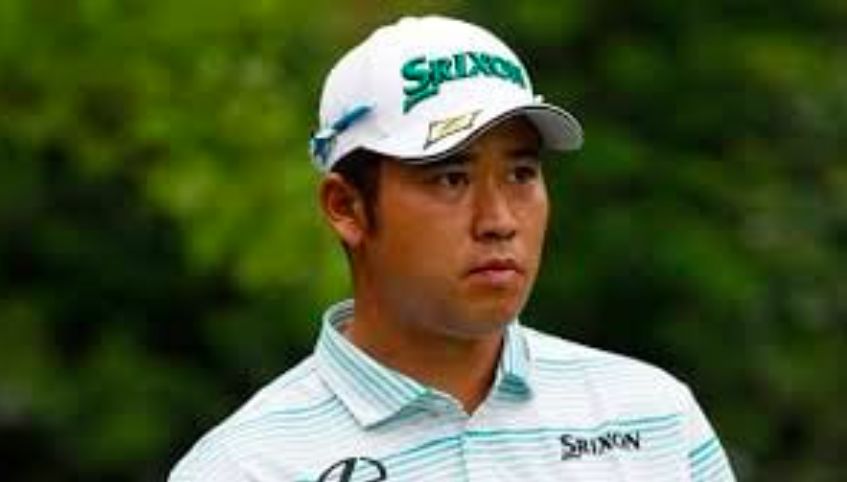
Hideki Matsuyama: Pioneering a New Era in Asian Golf
Hideki Matsuyama’s win at the 2021 Masters Tournament marked a historic moment for Asian golf. As the first Japanese player to win a men’s major championship, Matsuyama’s victory has further increased the popularity of golf in Japan and across Asia. This article delves into Matsuyama’s journey, his significant achievements, and the profound impact he has had on the world of golf.
Early Life and Introduction to Golf
A Promising Start
Hideki Matsuyama was born on February 25, 1992, in Matsuyama, Ehime, Japan. From a young age, Matsuyama showed a keen interest in golf, influenced by his father, who introduced him to the sport. His early years were spent honing his skills on local courses, where his talent quickly became evident.
Rise Through Junior Golf
Matsuyama’s proficiency in golf was apparent during his junior years. He won numerous national tournaments, showcasing his potential and determination. His success in junior golf laid a solid foundation for his future career and caught the attention of the golfing community in Japan.
Collegiate Success and Amateur Achievements
Dominating the College Circuit
Hideki Matsuyama attended Tohoku Fukushi University, where he continued to excel in golf. His collegiate career was marked by numerous victories, including the prestigious Japan Collegiate Championship. Matsuyama’s dominance on the college circuit further solidified his reputation as a rising star in Japanese golf.
Amateur Accolades
Matsuyama’s amateur career was highlighted by his back-to-back victories at the Asian Amateur Championship in 2010 and 2011. These wins earned him invitations to the Masters Tournament, where he made a significant impression with his performance, finishing as the low amateur in 2011.
Turning Professional
Early Professional Career
Hideki Matsuyama turned professional in 2013, and it didn’t take long for him to make his mark. His early years as a professional golfer were filled with impressive performances on the Japan Golf Tour, where he secured multiple victories and established himself as a formidable competitor.
Breakthrough on the PGA Tour
Matsuyama’s breakthrough on the PGA Tour came in 2014 when he won the Memorial Tournament. This victory was a significant milestone in his career, proving that he could compete and succeed at the highest level of professional golf. His success on the PGA Tour paved the way for further achievements on the international stage.
Historic Victory at the 2021 Masters Tournament
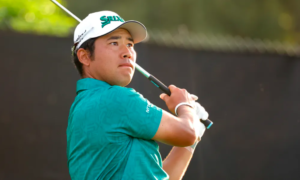
A Momentous Achievement
Hideki Matsuyama’s victory at the 2021 Masters Tournament was a landmark moment in the history of golf. As the first Japanese player to win a men’s major championship, Matsuyama’s triumph was celebrated not only in Japan but across the globe. His win was a testament to his skill, determination, and perseverance.
Impact on Japanese Golf
Matsuyama’s Masters victory had a profound impact on golf in Japan. It sparked a surge of interest in the sport, inspiring a new generation of golfers. His success demonstrated that Japanese golfers could compete and win at the highest levels, breaking barriers and challenging stereotypes.
The Influence of Matsuyama’s Victory on Asian Golf
Raising the Profile of Asian Golf
Matsuyama’s win at the Masters significantly raised the profile of Asian golf. It highlighted the talent and potential of golfers from Asia, encouraging more young players to pursue the sport professionally. His victory served as a beacon of hope and inspiration for aspiring golfers throughout the continent.
Inspiring Future Generations
Hideki Matsuyama’s success has inspired countless young golfers in Asia to chase their dreams. His journey from a promising junior golfer to a Masters champion is a source of motivation for many. Matsuyama’s achievements have shown that with hard work and dedication, anything is possible.
Hideki Matsuyama’s Major Achievements
Consistent Performances on the PGA Tour
In addition to his historic Masters victory, Hideki Matsuyama has consistently performed at a high level on the PGA Tour. His numerous top-10 finishes in major tournaments and regular season events underscore his status as one of the world’s top golfers.
International Victories
Matsuyama’s success is not limited to the PGA Tour. He has also achieved significant victories on the Japan Golf Tour and other international circuits. His global success highlights his versatility and ability to adapt to different courses and conditions.
Technical Skills and Playing Style
Impeccable Ball-Striking
One of Hideki Matsuyama’s most notable strengths is his ball-striking ability. He is known for his precise and powerful shots, which consistently place him in advantageous positions on the course. Matsuyama’s ball-striking skills are a key factor in his success.
Calm and Composed Demeanor
Matsuyama’s calm and composed demeanor on the course is another hallmark of his playing style. He is known for his ability to maintain focus and stay composed under pressure. This mental toughness is crucial in high-stakes tournaments and has contributed to his success.
Off the Course: Hideki Matsuyama’s Influence
Promoting Golf in Japan
Beyond his achievements on the course, Hideki Matsuyama has played a significant role in promoting golf in Japan. He has been involved in various initiatives to grow the sport, including youth development programs and public appearances that raise the profile of golf in the country.
Role Model and Mentor
Matsuyama serves as a role model and mentor to many young golfers in Japan and across Asia. His journey and success provide a blueprint for aspiring golfers to follow. Matsuyama’s willingness to share his experiences and offer guidance has had a positive impact on the next generation of golfers.
Challenges and Triumphs
Overcoming Adversity
Like any professional athlete, Hideki Matsuyama has faced his share of challenges and setbacks. Injuries, dips in form, and the pressures of competing at the highest level have tested his resilience. However, his ability to overcome adversity and bounce back stronger has been a defining characteristic of his career.
Triumphant Returns
Matsuyama’s career is marked by numerous triumphant returns from periods of struggle. His determination to overcome obstacles and return to winning ways is a testament to his character and work ethic. These comebacks have endeared him to fans and further cemented his legacy.
The Future of Golf in Japan and Asia
Building on Matsuyama’s Success
Hideki Matsuyama’s success has laid a strong foundation for the future of golf in Japan and Asia. The increased interest in the sport, coupled with the development of young talent, bodes well for the continued growth and success of golf in the region.
Potential Future Stars
The impact of Matsuyama’s victory is already evident in the emergence of new talent from Japan and Asia. Young golfers inspired by his achievements are making their mark on the international stage, suggesting a bright future for golf in the region.
Conclusion
Hideki Matsuyama’s victory at the 2021 Masters Tournament marked a historic moment for Asian golf. As the first Japanese player to win a men’s major championship, Matsuyama’s triumph has had a profound impact on the sport, inspiring a new generation of golfers and raising the profile of Asian golf on the global stage.
His journey from a promising junior golfer to a Masters champion is a testament to his skill, determination, and perseverance. Matsuyama’s legacy will continue to influence and inspire future generations of golfers in Japan and across Asia.
Frequently Asked Questions (FAQs)
How did Hideki Matsuyama’s victory at the Masters influence golf in Japan?
Hideki Matsuyama’s victory at the Masters significantly increased the popularity of golf in Japan. It inspired many young golfers to pursue the sport and led to greater investment in golf infrastructure and youth development programs.
What are some of Hideki Matsuyama’s notable achievements in his career?
In addition to his Masters victory, Hideki Matsuyama has won multiple tournaments on the PGA Tour and Japan Golf Tour. He has also consistently finished in the top 10 in major tournaments, establishing himself as one of the top golfers in the world.
How has Hideki Matsuyama’s success impacted golf in Asia?
Matsuyama’s success has raised the profile of golf in Asia and inspired many young golfers in the region. His achievements have shown that golfers from Asia can compete and succeed at the highest levels of the sport.
What role does Hideki Matsuyama play in promoting golf in Japan?
Beyond his achievements on the course, Hideki Matsuyama actively promotes golf in Japan through various initiatives. He is involved in youth development programs and public appearances that help grow the sport and inspire the next generation of golfers.
What are some challenges Hideki Matsuyama has faced in his career?
Matsuyama has faced several challenges, including injuries and periods of poor form. However, his resilience and determination have allowed him to overcome these obstacles and achieve significant success in his career.
-

 Football1 month ago
Football1 month agoMeet the World Football Celebrities and Their Stories
-

 Game2 weeks ago
Game2 weeks agoThe Ultimate Guide to General Multi-Sport Events
-
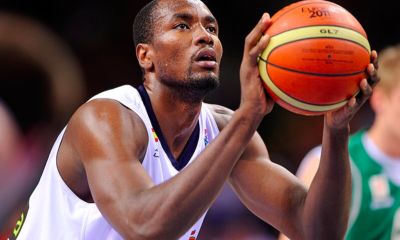
 Basketball4 weeks ago
Basketball4 weeks agoUnusual Personalities of Basketball Stars: Off-Court Eccentricities
-

 NBA1 month ago
NBA1 month agoTop NBA Celebrities in the World: The Biggest Stars
-

 Tennis1 week ago
Tennis1 week agoLegends of the Court: Celebrating the Top Tennis Players of All Time
-
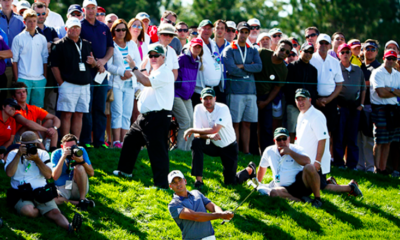
 Golf4 days ago
Golf4 days agoMasters of the Green: Celebrating Golf’s Elite
-

 Sports1 month ago
Sports1 month agoColumbia Sportswear: Innovating Durable Outdoor Gear for Adventurers
-

 MLB3 weeks ago
MLB3 weeks agoThe Legends of the Diamond: Top Players in Major League Baseball History




